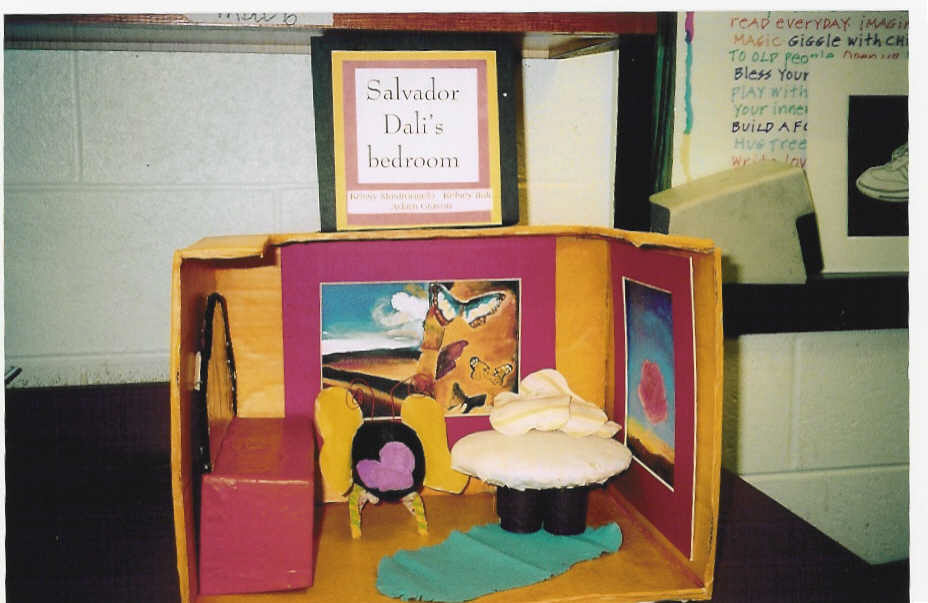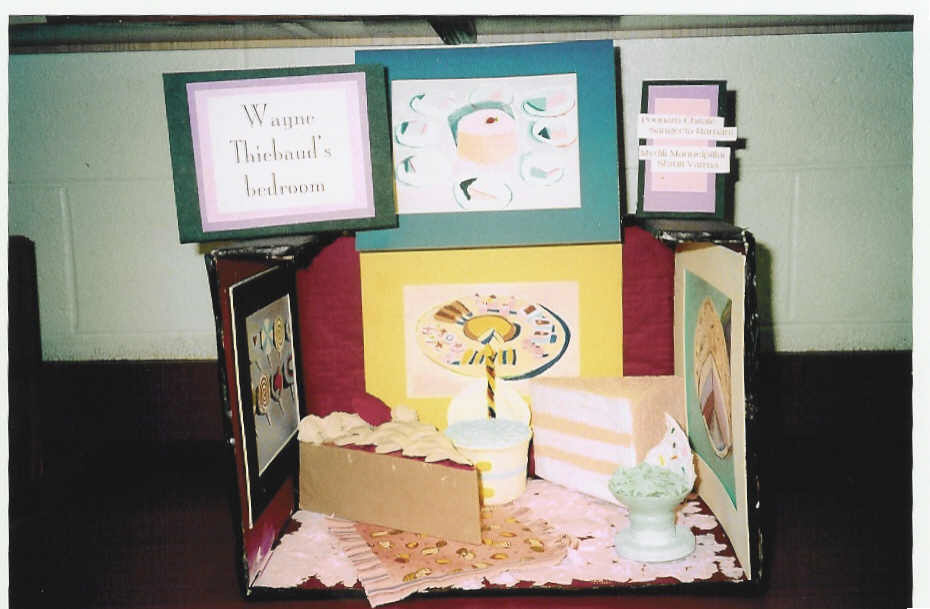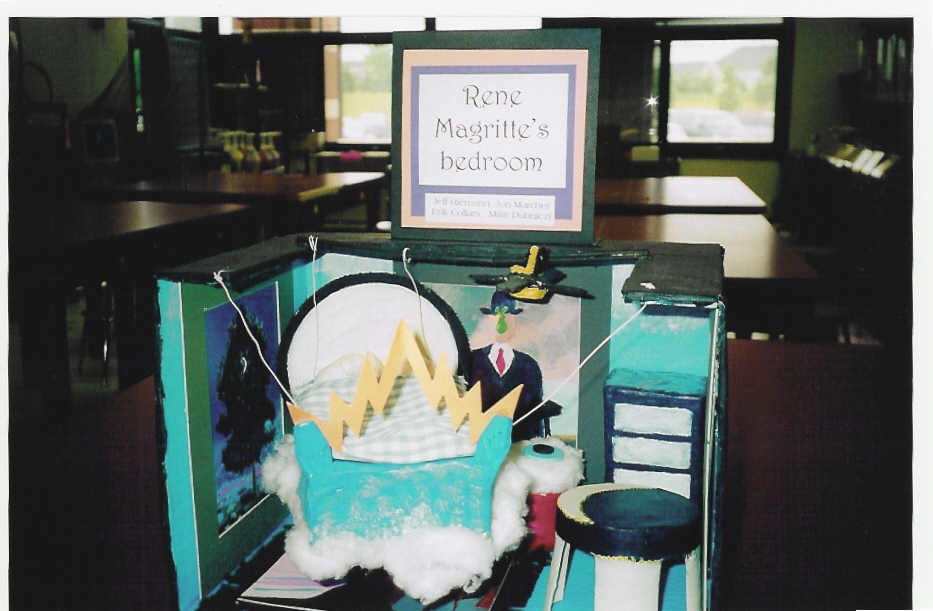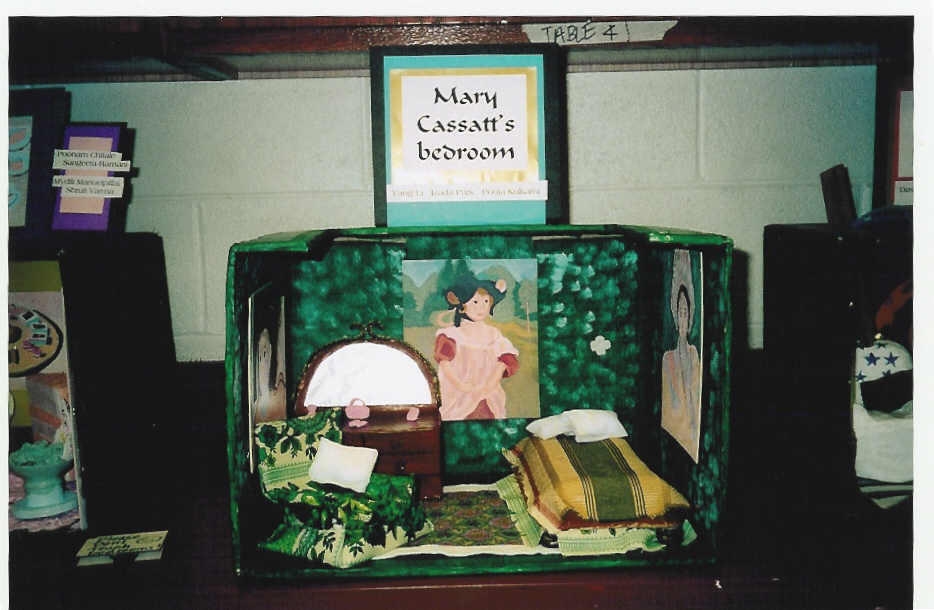3-D Artist Bedrooms
by Diane Lufrano
Grover Middle School
Princeton Junction, NJ

OBJECTIVES: To demonstrate an understanding of :
1) art movements and the artists that were part of these movements
2) various painting styles including brushstroke, technique, and color palette
3) interior design
4) architectural elements
5) installation art
6) sculpture in the round
GOAL: Part I Looking at van Gogh's painting for inspiration, "The Bedroom at Arles" discuss as a class why van Gogh may have created this most famous painting. Talk about -
A) Why he may have created it
B) What architectural elements did he use in his painting? a chair, bed, table, paintings on the wall, etc.
C) The time period in which he painted it
D) What encompasses the art style of impressionism
E) The type of brushstrokes, color palette and painting technique van Gogh used in this painting
F) The composition of the painting
G) A history of the man as a person and an artist
H) How it reflects his personality and relates to his other works
Part II Working cooperatively in groups of 3 or 4, research an art movement on artcyclopedia.com. The teacher can decide to limit the movement to abstract expressionism, or surrealism for example to limit it to only one movement the class studies as a whole. Decide together, after looking at various artists in that movement which one you would like to create a bedroom for. Each person will print a painting that will be used to decorate the walls of the bedroom as in a mural or paintings one would hang in a bedroom. The 4th painting can be used as a rug or on top of the room. Students can make 2 of the paintings smaller also, so they fit on one wall. Discourage students from trying to paint works that are too advanced for their ability. There are hundreds they are capable of creating without getting frustrated with the complexity of others.
Laminate the prints. Demonstrate as a class how to draw a grid on the print to enlarge it so it fills most of the wall in the bedroom.
Use the grid method to enlarge the paintings onto board or watercolor paper using light pencil lines
Students will create a painting chart to be used to match colors on their paintings. The painting chart will include reds, blues, yellows, and the shades and tints of those colors. Blending of colors as well as technique will be practiced on the chart. The chart will be graded and should be as accurate as possible using the color wheel for reference.
Demonstrate the blocking in of background colors. Individually, by group, the teacher demonstrates the artist's brushstroke and color palette and students continue to paint and finish the details so as to get a feel for the artists style by imitation.
Part III Use a cardboard box that is quite large. Cut off the top so only the walls and floor remain of the room. Decide together on a paint color for the room that contrasts with the paintings. Paint it carefully. When dry, mount paintings on the walls using a glue gun or heavy duty glue.
Part IV Brainstorm in groups what types of elements the chosen artist might have in his bedroom. Research on the artists life, time period in which he lived, personality and work will help students think about what he may have in his personal space. The bedroom must:
1) include a bed, chair, dresser and night table. Optional features can include a desk, window, shelves, pillows, lamps, books, clothing, etc.
2) be designed with the artist's painting style, historical period, and/or subject matter as the basis for the designs
3) be in proportion to each other and to real furniture
4) be made from cardboard, tape, found objects (egg cartons, containers, toilet paper rolls, fabric, etc) and be papier mâché
5) be able to stand with good balance
6) be painted using the artist's color palette and brushstroke
7) work cohesively as a bedroom
8) demonstrate good craftsmanship (neatness, pride in work)
Part V Write a short narrative about the artist to be included with the display.
The narrative will include year artist was born and died, place he was born and place he painted. Facts about his family, personality, major works and exhibitions, failures and successes should also be included so viewers can learn about the artist as a person and an artist.
 |
 |
|
|
|
 |